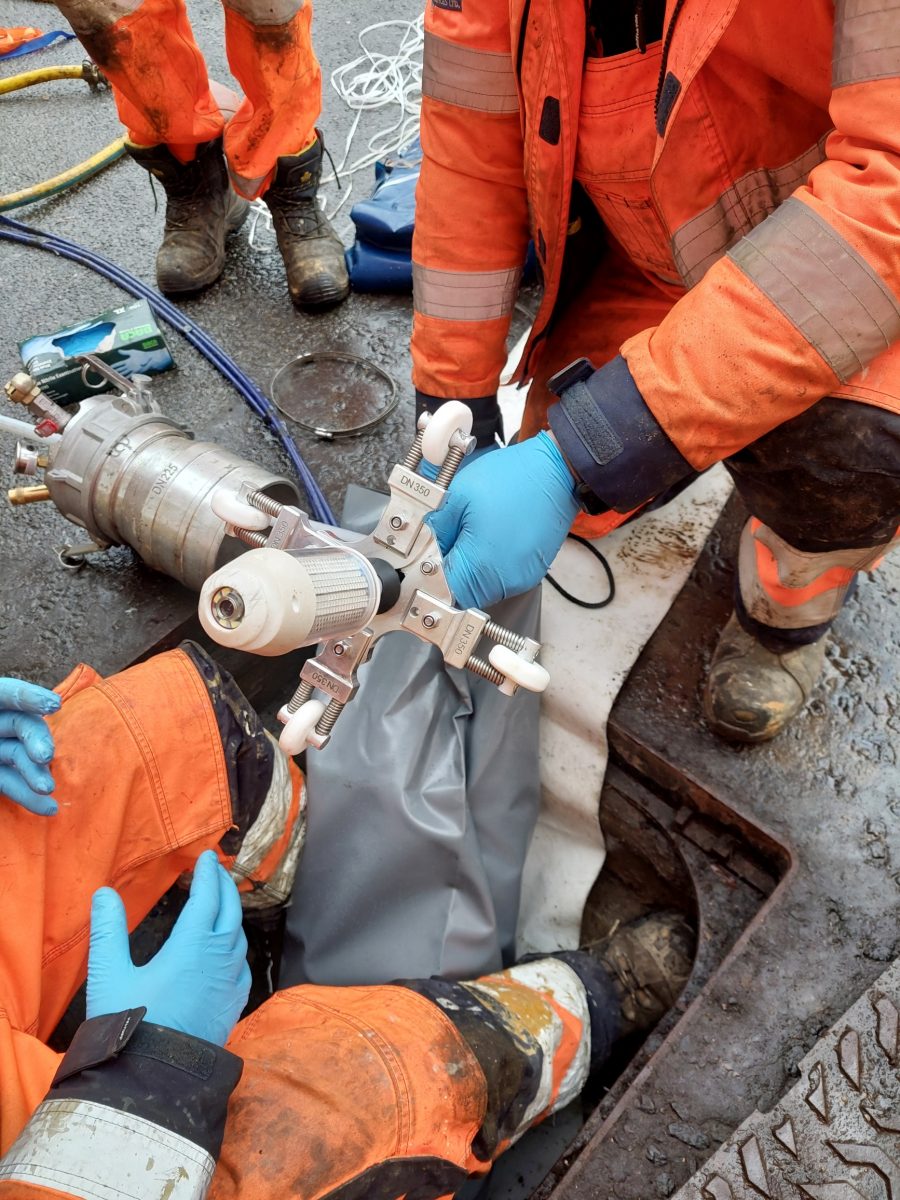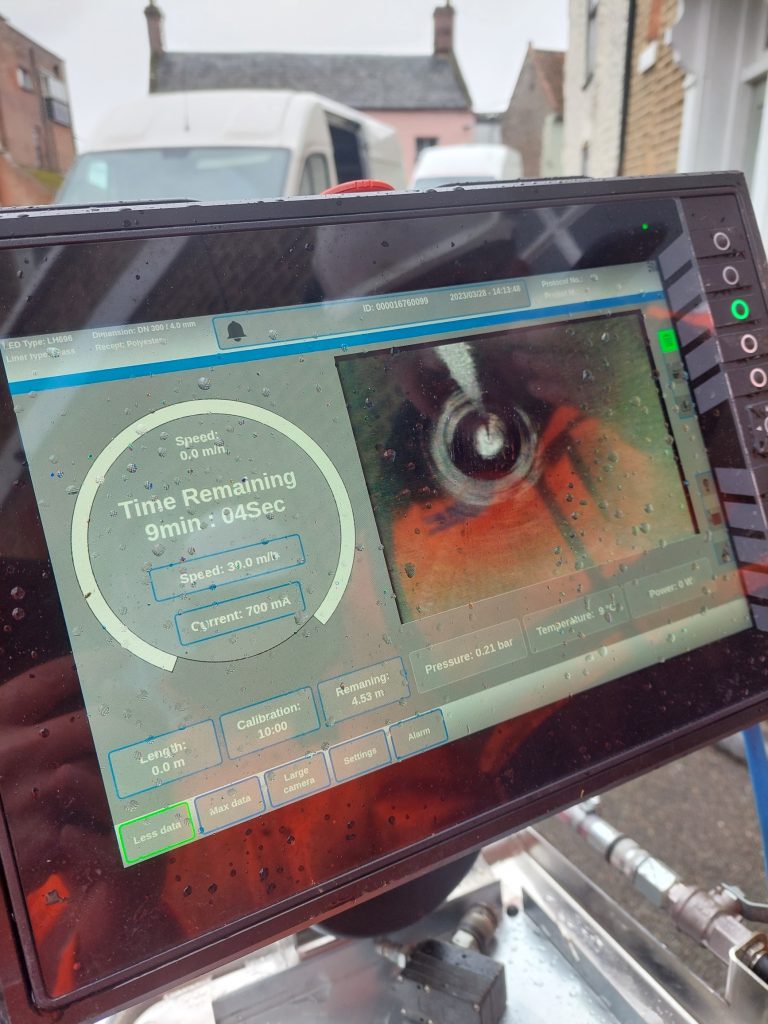
Case Study – All Saints House – Stoke Ferry
Which department is this referring to?
Claret Lining Division
Who was the customer?
Anglian Water IMR WR Alliance
What was the problem?
Anglian Water had received a complaint from All Saints House, Stoke Ferry, Norfolk, that sewerage was finding its way into their grade II listed building when there was heavy rainfall. An Anglian Water survey team was deployed to the site to investigate further.
The resident allowed us into their property to see the leak coming through the walls of their cellar and onto the floor, the water was tested and confirmed that it was indeed sewerage from a local asset that run underneath the property but above the cellar.
Further investigation with CCTV of the existing asset, showed this sewer system to be of a brick construction with a slate bottom. The survey identified that the sewer was constructed prior to the building being built which was in 1752.
It also identified that the slate bottom had been built on bricks and some of the slate was missing in places leaving what looked like small troughs which made the surveys more difficult to capture and to identify the sewers actual diameter. The barrel shaped brickwork that surrounded the slate bottom was missing mortar and showing large gaps which explained how the seepage was getting into the cellar of the property of All Saints House. The survey was conclusive, and a suitable solution had to be found to rehabilitate this 271-year-old asset with a trenchless technique that would not compromise the movement of the existing brick work and to ensure that it had a fully deteriorated design that would stand alone without the need of the existing structure.
What was the resolution? Please include statistics and measurements if appropriate.
Calls were made to different suppliers to see what material was best to use for this scheme to ensure a safe installation considering the dynamics of the existing pipe and to ensure we could extend the lifespan of this very old asset as well as making it stable and fit for purpose.
After brief discussions with James Stern Director of Bluelight Lining Ltd and a site visit, it was decided that a structural material was required. Being a water authority owned asset, an approved product with guaranteed results was required, and always wanting to be at the forefront of technology, Claret Civil Engineering approached Bluelight Lining Ltd to discuss a live demonstration of their new products.
The annulus (gap) between the newly lined pipe and the existing host pipe would have to be filled using a cementitious grout and for this, we brought in Total Specialist Maintenance who have the experience within their company to carry out this type of work and have had 100% success in the past.
We met with directors, James Stern (Bluelight Lining Ltd) and Adam Taylor (Total Specialist Maintenance) to discuss access, methods, and lead in times for materials. The meeting was concluded, quotes delivered, and orders raised and then installation date confirmed with Claret Civil Engineering Lining Team.
The project was to be a collaborative effort with Claret Civil Engineering, Bluelight Lining using this as a demonstration of their new materials & Total Specialist Maintenance coming together to deliver a truly unique opportunity to rehabilitate this historical 271-year-old sewer asset with a first of its kind in the UK, lining material.
The installation of 15m x 300mm x 4mm GRP Bluelight Lining was carried out and cured in just a few hours and then a cementitious material was injected into the annulus (gap) between the new lining and the host pipe to support both old structure and newly lined pipe. A post survey was carried out of the new lining which concluded that the rehabilitation was a success and was testament to great collaboration between these companies to achieve a new structural pipe, utilising innovative materials that were used for the first time in the UK.






